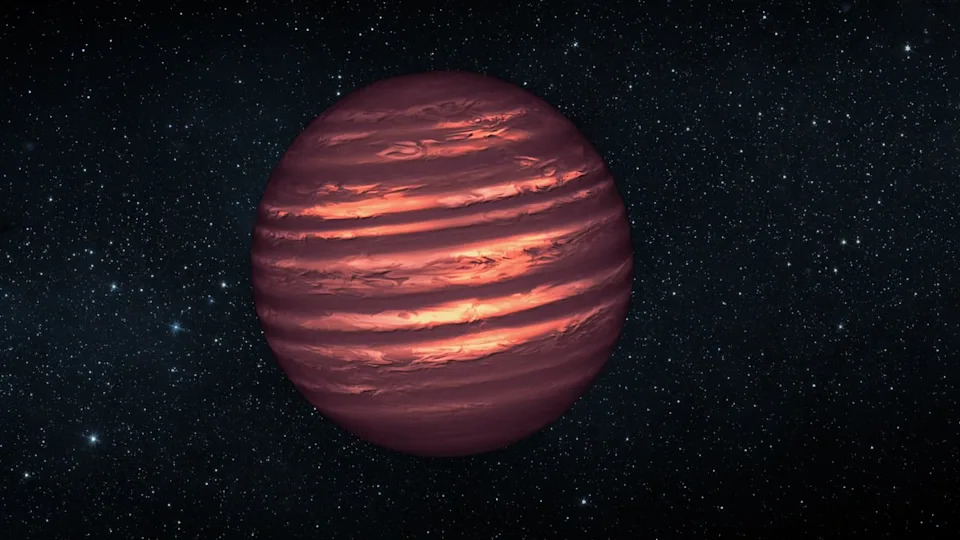
News
October 08, 2025
The search for life on Venus just took another turn, thanks to JWST's brown dwarf discovery
JWST's detection of phosphine on a brown dwarf, also known as a "failed star," could have repercussions for the claimed detection of the molecule on Venus.
**The search for life on Venus just took another turn, thanks to JWST's brown dwarf discovery**
The hunt for extraterrestrial life is full of twists and turns, and a recent discovery by the James Webb Space Telescope (JWST) has added another layer of intrigue to the ongoing debate about the potential for life on Venus. JWST's detection of phosphine on a brown dwarf, often referred to as a "failed star," could significantly impact our understanding of how this molecule can form and, consequently, the implications of its earlier claimed detection in the Venusian atmosphere.
Phosphine, a colorless and highly toxic gas, grabbed headlines in 2020 when scientists announced its possible presence in Venus's clouds. On Earth, phosphine is primarily associated with biological activity, specifically anaerobic bacteria thriving in oxygen-poor environments. This led to speculation that microbial life might exist in the harsh, acidic environment of Venus's atmosphere. However, the initial findings were met with skepticism, as the observed concentration of phosphine was difficult to explain through known non-biological processes.
The problem was that, without a biological source, it was hard to imagine how phosphine could be produced in the Venusian atmosphere in the quantities suggested. Alternative explanations, involving volcanic activity or unusual chemical reactions, were proposed but remained unconvincing.
Now, JWST's detection of phosphine on a brown dwarf changes the playing field. Brown dwarfs are celestial objects larger than planets but smaller than stars, lacking the mass needed to sustain nuclear fusion. The presence of phosphine on these objects suggests that non-biological processes can, indeed, produce the molecule under certain conditions.
This finding doesn't necessarily rule out the possibility of life on Venus. However, it opens the door to exploring alternative, non-biological pathways for phosphine formation in the Venusian atmosphere. Scientists will now need to re-evaluate the data from Venus, considering the possibility that the detected phosphine originated from geological or chemical processes, rather than biological ones.
The discovery underscores the complexity of astrobiology and the challenges of identifying biosignatures – molecules that indicate the presence of life. It also highlights the crucial role of telescopes like JWST in expanding our knowledge of the universe and refining our understanding of potentially habitable environments, both within and beyond our solar system. The search for life on Venus continues, but with a renewed focus and a more nuanced perspective, thanks to JWST's groundbreaking observation
The hunt for extraterrestrial life is full of twists and turns, and a recent discovery by the James Webb Space Telescope (JWST) has added another layer of intrigue to the ongoing debate about the potential for life on Venus. JWST's detection of phosphine on a brown dwarf, often referred to as a "failed star," could significantly impact our understanding of how this molecule can form and, consequently, the implications of its earlier claimed detection in the Venusian atmosphere.
Phosphine, a colorless and highly toxic gas, grabbed headlines in 2020 when scientists announced its possible presence in Venus's clouds. On Earth, phosphine is primarily associated with biological activity, specifically anaerobic bacteria thriving in oxygen-poor environments. This led to speculation that microbial life might exist in the harsh, acidic environment of Venus's atmosphere. However, the initial findings were met with skepticism, as the observed concentration of phosphine was difficult to explain through known non-biological processes.
The problem was that, without a biological source, it was hard to imagine how phosphine could be produced in the Venusian atmosphere in the quantities suggested. Alternative explanations, involving volcanic activity or unusual chemical reactions, were proposed but remained unconvincing.
Now, JWST's detection of phosphine on a brown dwarf changes the playing field. Brown dwarfs are celestial objects larger than planets but smaller than stars, lacking the mass needed to sustain nuclear fusion. The presence of phosphine on these objects suggests that non-biological processes can, indeed, produce the molecule under certain conditions.
This finding doesn't necessarily rule out the possibility of life on Venus. However, it opens the door to exploring alternative, non-biological pathways for phosphine formation in the Venusian atmosphere. Scientists will now need to re-evaluate the data from Venus, considering the possibility that the detected phosphine originated from geological or chemical processes, rather than biological ones.
The discovery underscores the complexity of astrobiology and the challenges of identifying biosignatures – molecules that indicate the presence of life. It also highlights the crucial role of telescopes like JWST in expanding our knowledge of the universe and refining our understanding of potentially habitable environments, both within and beyond our solar system. The search for life on Venus continues, but with a renewed focus and a more nuanced perspective, thanks to JWST's groundbreaking observation
Category:
Technology